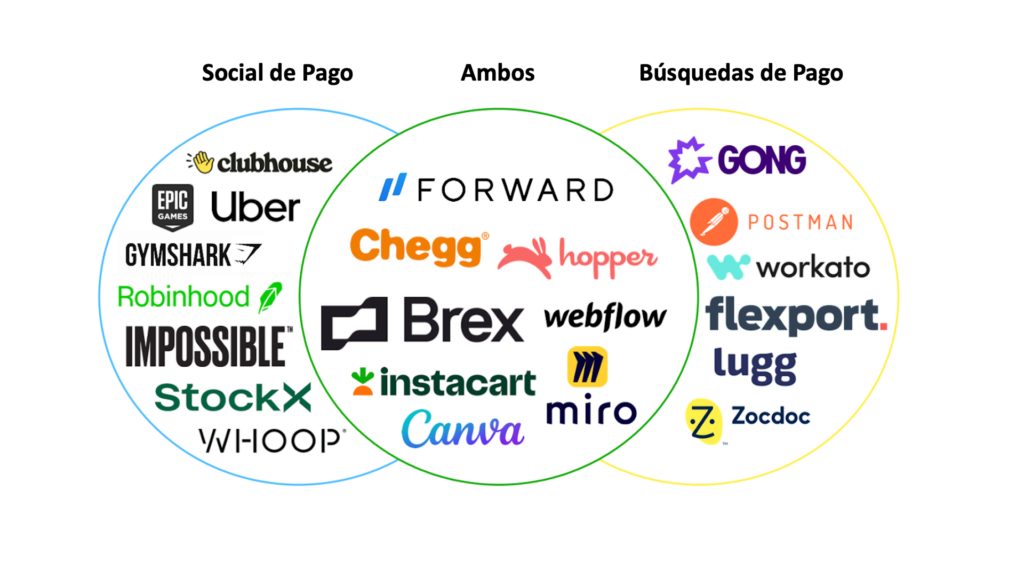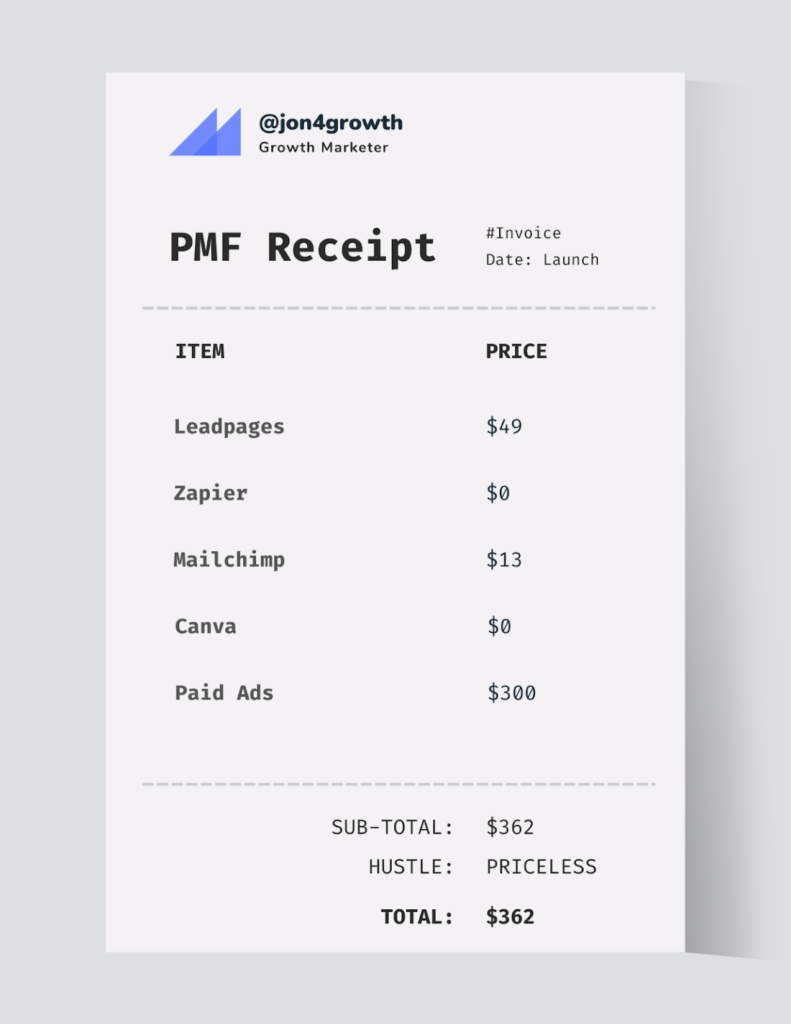Launching a startup usually means obsessing over whether product-market fit (PMF) has been achieved in the early days. More generally, PMF is a term we use to describe a product or service that has generated sufficient organic demand from consumers. This demand is sustainable and economically profitable for a startup to continue offering said product.
How can you find PMF in the most efficient and frictionless way possible? The answer is paid acquisition. Here we try to help select the best paying channel based on the initial idea, implement a battle-tested waitlist strategy, optimize messaging tests, among other aspects.
Which paid channel to select?
Meta is generally recommended as the first paid channel to explore for a multitude of reasons: targeting ability, relatively cheap traffic, and a visual format to test both graphics and text.
How can you find PMF in the most efficient and frictionless way possible? The answer is paid acquisition.
Conversely, Google and paid search traffic are preferable if the offer has a high search intent volume or is in a complex B2B segment. For example, advertising a supply chain AI startup targeting transportation companies on Meta would be too complex and unlikely to find the right audience.
The easiest method to determine which paid acquisition channel is right for your startup comes from answering the following three questions:
- Is the offer very visual (clothes, products, etc.)?
- Does the product/service require an immediate solution to an event (moving, doctor visit for a cold, etc.)?
- How complex is the offer?
If the answer is that the product/service is very visual, lean toward a paid social channel like Facebook or TikTok. However, if the offer is aimed at immediate, location-based or complex solutions, it should be oriented towards a paid search channel, effectively Google.

Examples of channels that startups can select to find PMF.
The Venn diagram above illustrates which channels these established startups should have tried if they were looking to validate PMF. Certain startups, like Forward Health or Canva, can get away with advertising on both channels because they are visual, not complex, and have a large target market.
Most consumers can take advantage of a new healthcare plan or graphic creation, which is inherently very visual. In contrast, a startup like Lugg, which helps people move house, should take advantage of Google, since its company offers a solution that consumers often need immediately and at very specific times.
As a side note, if you're looking to advertise on Meta, BusinessofApps reports that the latest cost per thousand impressions (CPM) is around around $15 in 2023. This means that for about 1000 people to see the offer, you'll pay about $15. Not bad!
Battle-tested waitlist method
A frequently used strategy to evaluate PMF is divided into five simple steps:
- Identify the payment channel
- Create a landing page
- Create advertising assets
- Launch campaign in the payment channel
- Measure performance and iterate
After identifying a payment channel, use an inexpensive service like Leadpages to create a landing page. As of this writing, you can start with a free trial with them and upgrade to a paid subscription for just $49/month. I won't go into detail about creating a landing page, as there are several sources on the web identifying best practices.
However, this is where the waitlist comes into play and it is imperative to create a way for consumers to quickly join said waitlist. It's a quick way to capture consumer intent in the form of emails or phone numbers. Next, if launching on a paid social network, a tool like Canva to create ad designs. Otherwise, you can just go ahead and launch the campaign.
The waiting list method is an inexpensive and effective way to understand consumer propensity for supply. It is not even necessary for the product or service to be ready for launch. Meta and TikTok have made it incredibly easy to collect consumer insights without a landing page through their Lead Form ads. This is a very effective method as it only involves creating advertising assets and then a lead form campaign.
The lead form can also be used to collect answers to questions you want answered from the beginning, along with customer information. An important caveat to the waitlist method is that you must have a strong email and/or text message follow-up strategy to keep consumers engaged. Leverage tools like Zapier to connect all your incoming leads to a service like Mailchimp, which can then send emails as leads arrive.

Estimated cost of the waiting list method
Best of all, you can try just about any idea for a few hundred dollars! It's also important to test methodically and have quick iterations as both data and leads come in.
Determining feasibility
The million-dollar question is whether the startup has achieved the PMF in relation to paid acquisition efforts. Below are a couple of simple methods to help you estimate how far you are from where you want to be:
- 25% reduction in cost
- s of acquisition.
- Conversion rate forecast.
- Lead survey reactions.
Whatever the paid acquisition costs are in the first week, costs can almost certainly be reduced by 25% as the company and the paid channel learn which assets resonate best.
This is true for almost all paid acquisition campaigns. An important caveat is that costs eventually increase at certain scale levels, but the increase compared to what you achieved $200 to $2000, or even $10000 is probably not noticeable.
In addition to optimizing costs, adopt the practice of forecasting what they will look like in your downstream funnel, such as CAC, based on forecasts that use conversion rates. For example, if you were using wait lists and were asking how likely potential customers are to purchase the product at a price of $X, you can begin to formulate downstream costs outside of purely lead cost.
Early reactions from potential customers should also provide an excellent qualitative insight into what responses to the offer are like. Are you excited? They are normal? They shouldn't be numbers on a sheet of paper and gauging enthusiasm should be done by talking to potential customers. Here are some questions to ask, with X being the name of the offer:
- On a scale (1-10), how dissatisfied would you be if X were not available?
- Would you buy X if we had stock tomorrow?
- What are the initial reactions to X?
Fast iterations are vital
Once the campaign is launched and you instantly have thousands of impressions about the product. That is the most beautiful facet of paid acquisition.
The first few days should be dedicated to constant iteration of messages and offers. How often should they iterate? A general rule of thumb is to get between 25 and 50 conversions per asset to have enough data to evaluate the effectiveness of each style.
What's worth noting is that it's much easier to validate a product like a skincare line that's priced at $19 versus software aimed at creative agencies that's priced at $299. Lead acquisition costs will differ greatly depending on how expensive the offer is, so take this into account when setting a validation budget.
Launching a product for thousands of people to give instant feedback is why we're lucky to live in a time where paid acquisition exists from companies like Meta, TikTok, and Google, giving you access to superpowers. of growth if used correctly.
So, prepare your potential starter ideas and get started.




